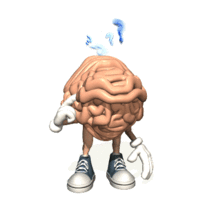How do children learn?
It's a pretty important question for all those in education...and parents...and childcare supervisors...in fact, anyone who is working with the development of young people. In fact maybe that question should be phrased as how do we learn, all of us, irrespective of age, race and socio-economic background. Does age, race and socio-economic background affect how we learn? More importantly, are we still learning? As teachers, one would most certainly hope so. Classroom or plaza's (as they are will be known in the New Line Learning Academy in Maidstone, UK which opens in 2011) have developed and changed a heck of a lot in the past 10 years and it is absolutely essential that we as educators ensure that we up to speed with the ongoing developments of ICT within the classroom and online. Thus ensuring that our students benefit academically, socially, creatively etc..
My quick and easy answer to the initial question is through "demonstration and imitation", which I think particularly applies up to the age of two but beyond that age "demonstration and imitation" applies more to the development of a persons social skills and interactions within the community. Over the "terrible toddler" age things get a little more complex to ensure deeper levels of understanding as young peoples brains develop. Here come the theory bits below...
The beginning of another academic year is a great time to get your students thinking about how they learn and as a result help them to appreciate the different learning styles within a class of 30 that a single teacher will have to cope with.
My suggestions...get your students to reflect on their personal learning as they complete a single topic forum "How I learn" on moodle (more on moodle another time), produce a spidergram, compare and contrast learning styles with their neighbour.
A very useful tool is the superb, free, easy to use online multiple intelligences test produced by Birmingham Grid for Learning, Birmingham City Council. This will give your students (and you!) a clearer idea of how they learn and which learning skills they need to develop. Their results are shown in a colourful, easy to read pie-chart of their personal learning style after they have answered a few questions.
I have got my students to either email me the code that is allocated to them on completion of the quiz or take a Print Scrn photo of their pie chart, pop it into Macromedia Fireworks and email to me as an image, attached to an email.
One thing I will stress though is not to say to students "we are learning about blah, blah, blah today through groupwork and visual activities so as you are a kinaesthetic learner you probably won't learn as well today" but work on developing areas of learning that you students need to by always including a variety of activities in you lessons thus catering for the differing learning styles of your students.
The quiz above is based on a Theory of Multiple Intelligences by American psychologist, Howard Gardiner (1983). According to Gardiner there are 8 different learning styles which are shown in the table below. According to Gardner's theory as shown in the Distance Learning Resource Network DLRN resource guide developed by Carla Lane, Gardner states that
"we are all able to know the world through language, logical-mathematical analysis, spatial representation, musical thinking, the use of the body to solve problems or to make things, an understanding of other individuals, and an understanding of ourselves. Where individuals differ is in the strength of these intelligences - the so-called profile of intelligences - and in the ways in which such intelligences are invoked and combined to carry out different tasks, solve diverse problems and, progress in various domains."
Here is a summary below of Gardner's Multiple Intelligences which links learners to activity types. This table is taken from an article by Jo Budden, British Council, Barcelona. It is adapted from Jeremy Harmer's book The Practice of English Language Teaching but was originally taken from "How to use Gardner's Intelligences in a class program" by M Loon for the University of Canberra.
| Learner Type | Is good at | Learns best by | Activities |
Linguistic | reading, writing and stories | saying, hearing and seeing words | memory games, trivia quizzes, stories |
| Logical/ Mathematical | solving puzzles, exploring patterns, reasoning & logic | asking questions, categorising and working with problems | puzzles, problem solving |
| Visual/ Spatial | drawing, building arts & crafts | visualising, using the mind's eye | flashcards, colours pictures, drawing |
| Musical | singing, listening to music and playing instruments | using rhythem, learning with music on | using songs, chants drilling |
| Bodily/ Kinaesthetic | moving around, touching things & body language | moving. touching & doing | action songs, running dictations, miming |
| Interpersonal | mixing with others, leading groups, understanding others & sharing | co-operating, working in groups & sharing | groups works, mingling, debates |
| Intrapersonal | working alone & pursuing own interests | working alone | working individually, personalised work |
| Naturalistic | nature | working outside & observing nature | environmental projects |
"Neuro-Biological research has demonstrated that learning is the result of modifications in the synaptic connections between cells in the brain. Gardner (1983), however, argues that culture also plays a large role in the development of human intelligences. This is because different societies value different types of intelligence, and the cultural value placed on the ability to perform certain tasks motivates individuals to become skilled in those areas. Thus an intelligence that is valued in one society may not be so important in another.
Gardner's Theory of Multiple Intelligences has several implications for classroom instruction. If, as Gardner proposes, we need all of the intelligences in order to function productively in society, then teachers should view all intelligences as equally important. To this end, teachers need to teach to a broader range of talents and skills, and to present material in a style that engages most or all of the intelligences."Future Thinking, Anne Sturgess, New Zealand Council for Educational Research, 2007
However...Gardner's Theory of Multiple Intelligences has been discredited by a number of people around the world, including Gardner himself! Have a read of his article Multiple Intelligences after 20 years (2003). There is no evidence from neuroscience to back up his theory, in fact because of the lack of scientific evidence for separate intelligences, Gardner redefined his multiple intelligences in 2006 as
“composites of fine-grained neurological subprocesses but not those subprocesses themselves” Gardner and Moran, 2006
1) cognitive (the ability to process and utilise thinking)
2) affective (the role of feelings and attitudes in the learning process)
3) psychomotor (manipulative or physical skills)
Blooms taxonomy was adapted by Lorin Anderson and David Kraftwohl in 2001 following 5 years of research. The new taxonomy was a larger group effort lead by Anderson and Krathwohl, the group was assembled by the primary authors and included people with expertise in the areas of cognitive psychology, curriculum and instruction, and educational testing, measurement, and assessment. See below a visual comparison of the two taxonomies.
The animation below titled "Bloom's bakery" illustrates Bloom's Cognitive Taxonomy (1956) as revised by Anderson and Kraftwohl (2001). The layers of the cake represent the levels of learning with each layer representing increasing complexity. Presented with each layer are sample verbs and products that describe actions or creations at that level of cognitive development.
Have you heard of DigiGogy? It is a new digital pedagogy, stating the the basic principles of learning do not change but tools used do. DigiGogy is a term coined by Michael Fisher
" Digigogy is a paradigm shift.Where pedagogy is about methods to instruct, Digigogy is about those methods, but with a technological frame. From hardware to software, from tech ed theory to application, Digigogy is about reframing our methods in the future of instruction. The new way of learning is a complete tear down and rebuild of traditional teaching, where learning is a joint effort and roles are reborn. Beyond the desks...beyond the walls...beyond the school. The new classroom is orbital, and scenic, and here. "
This is Michael Fisher's visual representation of the new version of Bloom's taxonomy. What do you think? I am a huge fan, this is most certainly a Bloom's model for 21st century teaching, this is how we encourage creative, collaborative, lifelong learners. I will be making absolutely sure to refer to it regularly over the next few months (and years!)
"If children don't learn the way we teach, we have to change the way we teach"
Ignatio Estrada
Ignatio Estrada
"In this multimedia, social networking, creative, dynamic world that we live in,
we have to change the way we teach"
Ms Beaker










Thank you very much for including me in your post! I love the conversation that has been started by this image, and wanted to let you know that there is an updated image at http://visualblooms.wikispaces.com/ where the technology tools are a little more fluid between the levels making interactivity easier to visualize! -Mike Fisher
ReplyDeleteThanks Mike, I have edited my post to now include your updated version, it's fabulous! :-)
ReplyDelete